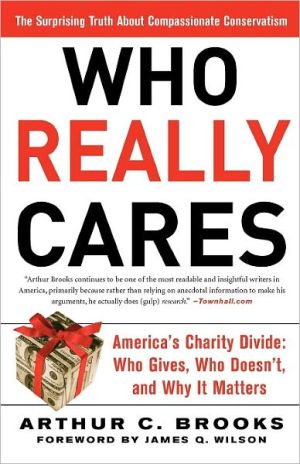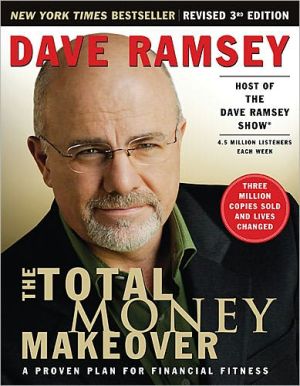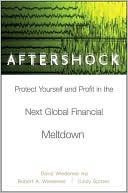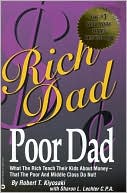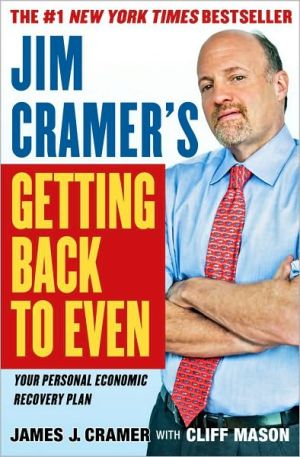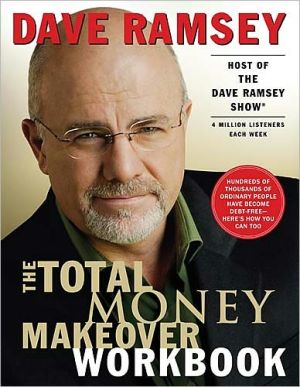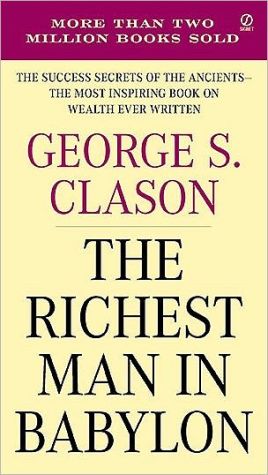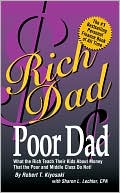Who Really Cares: The Surprising Truth About Compassionate Conservatism
We all know we should give to charity, but who really does? In his controversial study of America’s giving habits, Arthur C. Brooks shatters stereotypes about charity in America-including the myth that the political Left is more compassionate than the Right. Brooks, a preeminent public policy expert, spent years researching giving trends in America, and even he was surprised by what he found. In Who Really Cares, he identifies the forces behind American charity: strong families, church...
Search in google:
Surprising proof that conservatives really are more compassionate--and more generous--than liberals Rachel Bridgewater - Library Journal Here, economics and public policy scholar Brooks offers up impressive research on the demographics of charitable giving, revealing that religious people (i.e., belonging to any faith, they regularly attend religious services) give much more to charity in both dollars and volunteer hours than secular people. Brooks's writing is clear, crisp, and readable despite his abundant number-crunching using 2000 and 2002 statistics. An occasionally overheated style somewhat weakens the impact of his scholarship. That he has chosen to frame his findings as a story of conservatives vs. liberals rather than allowing the more complex and more interesting story revealed by his data to speak for itself is unfortunate. Brooks disproves the truism that liberals are generous and conservatives stingy, but his tone gives the whole affair a partisan feel. Despite this, Brooks has a fascinating story to tell about the state of charity in the United States who gives, why it matters, and what can be done to increase it. Recommended for public and academic libraries.
Is Compassionate Conservatism an Oxymoron?\ The conventional wisdom runs like this: Liberals are charitable because they advocate government redistribution of money in the name of social justice; conservatives are uncharitable because they oppose these policies. But note the sleight of hand: Government spending, according to this logic, is a form of charity.\ Let us be clear: Government spending is not charity. It is not a voluntary sacrifice by individuals. No matter how beneficial or humane it might be, no matter how necessary it is for providing public services, it is still the obligatory redistribution of tax revenues. Because government spending is not charity, sanctimonious yard signs do not prove that the bearers are charitable or that their opponents are selfish. (On the contrary, a public attack on the integrity of those who don’t share my beliefs might more legitimately constitute evidence that I am the uncharitable one.)\ To evaluate accurately the charity difference between liberals and conservatives, we must consider private, voluntary charity. How do liberals and conservatives compare in their private giving and volunteering? Beyond strident slogans and sarcastic political caricatures, what, exactly, do the data tell us?\ The data tell us that the conventional wisdom is dead wrong. In most ways, political conservatives are not personally less charitable than political liberals—they are more so.\ First, we must define “liberals” and “conservatives.” Most surveys ask people not just about their political party affiliation but also about their ideology. In general, about 10 percent of the population classify themselves as “very conservative”; and another 10 percent call themselves “very liberal.” About 20 percent say they are simply “liberal,” and 30 percent or so say they are “conservative.” The remaining 30 percent call themselves “moderates” or “centrists.” In this discussion, by “liberals” I mean the approximately 30 percent in the two most liberal categories, and by conservatives I mean the 40 percent or so in the two most conservative categories.\ So how do liberals and conservatives compare in their charity? When it comes to giving or not giving, conservatives and liberals look a lot alike. Conservative people are a percentage point or two more likely to give money each year than liberal people, but a percentage point or so less likely to volunteer.\ But this similarity fades away when we consider average dollar amounts donated. In 2000, households headed by a conservative gave, on average, 30 percent more money to charity than households headed by a liberal ($1,600 to $1,227). This discrepancy is not simply an artifact of income differences; on the contrary, liberal families earned an average of 6 percent more per year than conservative families, and conservative families gave more than liberal families within every income class, from poor to middle class to rich.\ If we look at party affiliation instead of ideology, the story remains largely the same. For example, registered Republicans were seven points more likely to give at least once in 2002 than registered Democrats (90 to 83 percent).\ The differences go beyond money and time. Take blood donations, for example. In 2002, conservative Americans were more likely to donate blood each year, and did so more often, than liberals. If liberals and moderates gave blood at the same rate as conservatives, the blood supply in the United States would jump by about 45 percent.\ The political stereotypes break down even further when we consider age: “Anyone who is not a socialist before age thirty has no heart, but anyone who is still a socialist after thirty has no head,” goes the old saying. And so we imagine crusty right-wing grandfathers socking their money away in trust funds while their liberal grandchildren work in soup kitchens and save the whales. But young liberals—perhaps the most vocally dissatisfied political constituency in America today—are one of the least generous demographic groups out there. In 2004, self-described liberals younger than thirty belonged to one-third fewer organizations in their communities than young conservatives. In 2002, they were 12 percent less likely to give money to charities, and one-third less likely to give blood. Liberal young Americans in 2004 were also significantly less likely than the young conservatives to express a willingness to sacrifice for their loved ones: A lower percentage said they would prefer to suffer than let a loved one suffer, that they are not happy unless the loved one is happy, or that they would sacrifice their own wishes for those they love.\ The compassion of American conservatives becomes even clearer when we compare the results from the 2004 U.S. presidential election to data on how states address charity. Using Internal Revenue Service data on the percentage of household income given away in each state, we can see that the red states are more charitable than the blue states. For instance, of the twenty-five states that donated a portion of household income above the national average, twenty-four gave a majority of their popular votes to George W. Bush for president; only one gave the election to John F. Kerry. Of the twenty-five states below the national giving average, seventeen went for Kerry, but just seven for Bush. In other words, the electoral map and the charity map are remarkably similar.\ These results are not an artifact of close elections in key states. The average percentage of household income donated to charity in each state tracked closely with the percentage of the popular vote it gave to Mr. Bush. Among the states in which 60 percent or more voted for Bush, the average portion of income donated to charity was 3.5 percent. For states giving Mr. Bush less than 40 percent of the vote, the average was 1.9 percent. The average amount given per household from the five states combined that gave Mr. Bush the highest vote percentages in 2003 was 25 percent more than that donated by the average household in the five northeastern states that gave Bush his lowest vote percentages; and the households in these liberal-leaning states earned, on average, 38 percent more than those in the five conservative states.\ People living in conservative states volunteer more than people in liberal states. In 2003, the residents of the top five “Bush states” were 51 percent more likely to volunteer than those of the bottom five, and they volunteered an average of 12 percent more total hours each year. Residents of these Republican-leaning states volunteered more than twice as much for religious organizations, but also far more for secular causes. For example, they were more than twice as likely to volunteer to help the poor.\ Surely Jimmy Carter would have been surprised to learn that the selfish Americans he criticized so vociferously were most likely the very people who elected him president.\ \ Reprinted with permission © Basic Books - 2007
Foreword James Q. Wilson xiIntroduction: Charity and Selfishness in America 1Is Compassionate Conservatism an Oxymoron? 15Faith and Charity 31Other People's Money 53Income, Welfare, and Charity 75Charity Begins at Home 97Continental Drift 115Charity Makes You Healthy, Happy, and Rich 137The Way Forward 161The Data on Charity and Selfishness 185Notes 209Acknowledgments 237Index 241
\ Library JournalHere, economics and public policy scholar Brooks offers up impressive research on the demographics of charitable giving, revealing that religious people (i.e., belonging to any faith, they regularly attend religious services) give much more to charity—in both dollars and volunteer hours—than secular people. Brooks's writing is clear, crisp, and readable despite his abundant number-crunching using 2000 and 2002 statistics. An occasionally overheated style somewhat weakens the impact of his scholarship. That he has chosen to frame his findings as a story of conservatives vs. liberals rather than allowing the more complex and more interesting story revealed by his data to speak for itself is unfortunate. Brooks disproves the truism that liberals are generous and conservatives stingy, but his tone gives the whole affair a partisan feel. Despite this, Brooks has a fascinating story to tell about the state of charity in the United States—who gives, why it matters, and what can be done to increase it. Recommended for public and academic libraries.\ —Rachel Bridgewater\ \
